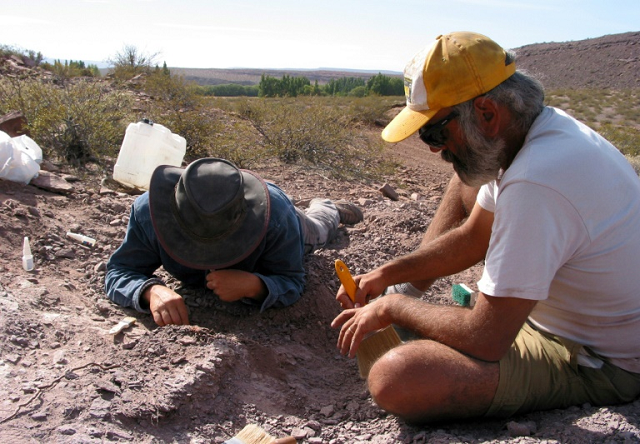Paleontologists discover new sauropod species in Argentina
The area in which the fossils were found is unusual for dinosaurs as it would have been a desert

The region where the new species of sauropod was found is unusual as it would have been a desert during that era, 110 million years ago. PHOTO: AFP
The remains came from three separate dinosaurs from the herbivorous group of sauropods, the best known of which are the Diplodocus and Brontosaurus. This new species has been named Lavocatisaurus agrioensis.
Ancient shipwrecks found in Greek waters tell tale of trade routes
"We found most of the cranial bones: the snout, the jaws, a lot of teeth, also the bones that define the eye sockets for example and, in that way, we were able to create an almost complete reconstruction," said Jose Luis Carballido, a researcher at the Egidio Feruglio museum and the national council of scientific investigations.
Parts of the neck, tail and back were also found.
"Not only is this the discovery of a new species in an area where you wouldn't expect to find fossils, but the skull is almost complete," added Carballido.
The remains belonged to an adult of around 12 meters (39 feet) in length, and two minors of around six to seven meters.
The paleontologists say the dinosaurs moved around in a group and died together.
"This discovery of an adult and two juveniles also signifies the first record of a group displacement among the rebbachisaurus dinosaurs," said study lead author Jose Ignacio Canudo of Zaragoza University.
The area in which the fossils were found is unusual for dinosaurs as it would have been a desert with sporadic lakes in that era.
Sauropods were the biggest creatures ever to walk the planet. It is believed that Supersaurus could reach up 33-34 meters in length and Argentinosaurus might have weighed up to 120 tons.
Korean who retraced 1,300-year-old journey has a message for today
They were herbivorous quadrupeds with long necks and tails, massive bodies and small heads.
But the discovery in Neuquen, published in the scientific journal Acta Palaeontologica Polonica, remains a huge surprise.
"While one can imagine that this group of sauropods could have adapted to move in more arid environments, with little vegetation, little humidity and little water, it's an area in which you wouldn't be looking for fossils," said Carballido.



















COMMENTS
Comments are moderated and generally will be posted if they are on-topic and not abusive.
For more information, please see our Comments FAQ